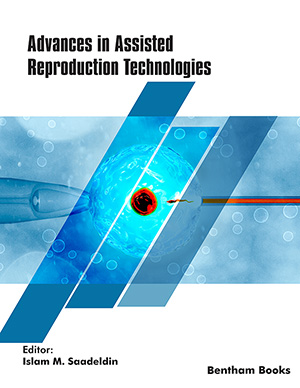Abstract
Background: Laccases are among the oldest known multi-copper enzymes from a diverse array of species, including bacteria and fungi, and are of great importance in different industries like beverage, biosensors, textile, paper, and pulp. From the aspect of origin, interestingly, bacterial laccase is of two kinds, namely, 3-domain conventional laccase and 2-domain small laccase. This enzyme is capable of degrading synthetic textile azo dyes, xenobiotic polycyclic aromatic hydrocarbons, biogenic amines etc. Over the last few years, research on laccase has steadily increased based on biosensors and the understanding of known unknowns.
Objective: In this extensive review, we focus on classification, structural differences based on assorted origins, and applications that will help to know the unknown factors about this strenuous enzyme.
Conclusion: To better understand the origin-function relationship, hypothetical proteins of selected bacterial laccase are reviewed.
Keywords: Laccases, copper enzymes, bioinformatics, functional genomics, protein interactions, strenuous enzyme.
[http://dx.doi.org/10.1007/s00018-014-1827-5] [PMID: 25586561]
[http://dx.doi.org/10.1016/j.cej.2020.125506]
[http://dx.doi.org/10.1039/C4EM00627E] [PMID: 25590782]
[http://dx.doi.org/10.1007/s00792-017-0958-7] [PMID: 28871494]
[http://dx.doi.org/10.2174/1872208312666180821161015] [PMID: 30147019]
[http://dx.doi.org/10.3390/ijms21030966] [PMID: 32024019]
[http://dx.doi.org/10.1007/s00253-016-7897-6] [PMID: 27738721]
[http://dx.doi.org/10.1016/j.aca.2018.01.008] [PMID: 29422133]
[http://dx.doi.org/10.1007/s11274-020-02888-1] [PMID: 32661601]
[http://dx.doi.org/10.1007/s13205-017-0955-7] [PMID: 28955620]
[http://dx.doi.org/10.1111/j.1574-6968.1993.tb06100.x]
[http://dx.doi.org/10.17485/ijst/2010/v3i1.8]
[http://dx.doi.org/10.1155/2015/765190] [PMID: 26451255]
[http://dx.doi.org/10.1007/s13205-016-0425-7] [PMID: 28330177]
[http://dx.doi.org/10.1016/j.biortech.2017.01.036] [PMID: 28161622]
[http://dx.doi.org/10.3390/molecules26133813] [PMID: 34206669]
[http://dx.doi.org/10.1186/s12934-019-1248-0] [PMID: 31727078]
[http://dx.doi.org/10.1371/journal.pone.0096951] [PMID: 24871763]
[http://dx.doi.org/10.1007/s00018-014-1822-x] [PMID: 25572294]
[http://dx.doi.org/10.1128/AEM.69.4.1953-1958.2003] [PMID: 12676669]
[http://dx.doi.org/10.1271/bbb.67.2167] [PMID: 14586105]
[http://dx.doi.org/10.1016/j.pep.2016.03.011] [PMID: 27050199]
[http://dx.doi.org/10.1128/AEM.01757-09] [PMID: 19966030]
[http://dx.doi.org/10.1074/jbc.M301251200] [PMID: 12637519]
[http://dx.doi.org/10.1128/JB.183.18.5426-5430.2001] [PMID: 11514528]
[http://dx.doi.org/10.1007/s00253-004-1571-0] [PMID: 15293032]
[http://dx.doi.org/10.1128/JB.183.16.4866-4875.2001] [PMID: 11466290]
[http://dx.doi.org/10.1093/nar/gkf526] [PMID: 12235376]
[http://dx.doi.org/10.1128/AEM.65.4.1762-1768.1999] [PMID: 10103278]
[http://dx.doi.org/10.1128/AEM.67.9.4272-4278.2001] [PMID: 11526033]
[http://dx.doi.org/10.1073/pnas.88.20.8915] [PMID: 1924351]
[http://dx.doi.org/10.1073/pnas.241636498] [PMID: 11792869]
[http://dx.doi.org/10.1007/s00792-005-0458-z] [PMID: 15999224]
[http://dx.doi.org/10.1128/jb.176.1.173-188.1994] [PMID: 8282694]
[http://dx.doi.org/10.1016/j.heliyon.2020.e03972] [PMID: 32435715]
[PMID: 10561562]
[PMID: 16521579]
[http://dx.doi.org/10.1074/jbc.M900179200] [PMID: 19224923]
[http://dx.doi.org/10.1021/ac980022s] [PMID: 9666727]
[http://dx.doi.org/10.1007/s00018-009-0169-1] [PMID: 19844659]
[http://dx.doi.org/10.1111/j.1574-4976.2005.00010.x] [PMID: 16472305]
[http://dx.doi.org/10.1007/s11157-011-9257-4]
[http://dx.doi.org/10.1134/S0006297912120085] [PMID: 23244736]
[http://dx.doi.org/10.1007/s00253-018-9421-7] [PMID: 30327832]
[http://dx.doi.org/10.1016/j.biortech.2011.08.046] [PMID: 21908186]
[http://dx.doi.org/10.1111/1751-7915.12422] [PMID: 27696775]
[http://dx.doi.org/10.1007/s00018-018-2883-z] [PMID: 30046841]
[http://dx.doi.org/10.1371/journal.pone.0099402] [PMID: 24915287]
[http://dx.doi.org/10.1016/j.biochi.2015.03.005] [PMID: 25778839]
[http://dx.doi.org/10.1016/j.jbiotec.2005.01.002] [PMID: 15831249]
[http://dx.doi.org/10.1016/j.molcatb.2013.11.009]
[http://dx.doi.org/10.1016/j.procbio.2016.11.015]
[http://dx.doi.org/10.1016/j.enzmictec.2017.07.013] [PMID: 29224621]
[http://dx.doi.org/10.1371/journal.pone.0119833] [PMID: 25790466]
[http://dx.doi.org/10.1186/2191-0855-3-63] [PMID: 24152339]
[http://dx.doi.org/10.1007/s11274-016-2032-5] [PMID: 26886217]
[http://dx.doi.org/10.1016/j.sjbs.2018.05.020] [PMID: 31303819]
[http://dx.doi.org/10.1016/j.micron.2003.10.029] [PMID: 15036303]
[http://dx.doi.org/10.1016/j.procbio.2012.03.006]
[http://dx.doi.org/10.1107/S0907444902011575] [PMID: 12198312]
[http://dx.doi.org/10.1016/j.febslet.2009.03.008] [PMID: 19285076]
[http://dx.doi.org/10.1110/ps.04759104] [PMID: 15295117]
[http://dx.doi.org/10.1111/febs.12755] [PMID: 24548692]
[http://dx.doi.org/10.1111/jam.13241] [PMID: 27451019]
[http://dx.doi.org/10.1371/journal.pone.0127714] [PMID: 26020270]
[http://dx.doi.org/10.1016/j.biortech.2018.09.129] [PMID: 30293031]
[http://dx.doi.org/10.1002/marc.201500474] [PMID: 26497301]
[http://dx.doi.org/10.1007/s00018-014-1826-6] [PMID: 25572295]
[http://dx.doi.org/10.1107/S2059798317003667] [PMID: 28471364]
[http://dx.doi.org/10.1007/s12010-008-8175-6] [PMID: 18473186]
[http://dx.doi.org/10.1007/s10311-020-01081-y]
[http://dx.doi.org/10.1016/j.biotechadv.2010.05.002] [PMID: 20471466]
[http://dx.doi.org/10.1016/0014-5793(90)80298-W] [PMID: 2365094]
[http://dx.doi.org/10.1016/j.jelechem.2005.01.025]
[http://dx.doi.org/10.1016/S0304-4165(97)00117-7] [PMID: 9545600]
[PMID: 16608443]
[http://dx.doi.org/10.1016/S1381-1177(01)00067-4]
[http://dx.doi.org/10.1016/j.bej.2006.10.014]
[PMID: 15125193]
[http://dx.doi.org/10.1021/es062723+] [PMID: 17612200]
[http://dx.doi.org/10.1128/AEM.66.2.524-528.2000] [PMID: 10653713]
[http://dx.doi.org/10.1016/j.procbio.2006.09.011]
[http://dx.doi.org/10.1016/j.enzmictec.2006.09.016]
[http://dx.doi.org/10.1016/j.enzmictec.2008.10.014]
[http://dx.doi.org/10.1002/btpr.2173] [PMID: 26399693]
[http://dx.doi.org/10.3390/molecules26123719] [PMID: 34207073]
[http://dx.doi.org/10.1007/s41101-017-0031-5]
[http://dx.doi.org/10.1016/j.ejbt.2019.12.004]
[http://dx.doi.org/10.1007/s10311-020-01021-w] [PMID: 32837482]
[http://dx.doi.org/10.1007/978-981-15-0497-6_4]
[http://dx.doi.org/10.1016/j.jhazmat.2020.124631] [PMID: 33278727]
[http://dx.doi.org/10.1007/s11270-014-2175-7]
[http://dx.doi.org/10.1080/10934529.2017.1301747] [PMID: 28358283]
[http://dx.doi.org/10.1016/j.procbio.2017.01.030]
[http://dx.doi.org/10.1371/journal.pone.0175144] [PMID: 28384218]
[http://dx.doi.org/10.1007/s10529-017-2461-8] [PMID: 29063287]
[http://dx.doi.org/10.1016/j.biortech.2013.02.015] [PMID: 23500563]
[http://dx.doi.org/10.1016/j.ecoenv.2017.03.005] [PMID: 28284151]
[http://dx.doi.org/10.1007/978-981-15-3669-4_5]
[http://dx.doi.org/10.1016/j.biortech.2012.01.172] [PMID: 22377476]
[http://dx.doi.org/10.1016/j.biortech.2011.07.111] [PMID: 21868217]
[http://dx.doi.org/10.1016/j.biortech.2012.09.055] [PMID: 23073092]
[http://dx.doi.org/10.1016/j.jbiotec.2008.09.001] [PMID: 18938200]
[http://dx.doi.org/10.1016/j.enzmictec.2008.10.005]
[http://dx.doi.org/10.1016/j.biortech.2016.08.016] [PMID: 27598570]
[http://dx.doi.org/10.1002/btpr.2068] [PMID: 25740593]
[http://dx.doi.org/10.1038/srep42121] [PMID: 28169340]
[http://dx.doi.org/10.1016/j.biortech.2012.11.040] [PMID: 23265820]
[http://dx.doi.org/10.1371/journal.pone.0187649] [PMID: 29112957]
[http://dx.doi.org/10.1016/j.ijbiomac.2017.07.055] [PMID: 28709895]
[http://dx.doi.org/10.1371/journal.pone.0144379] [PMID: 26642207]
[http://dx.doi.org/10.1016/j.ijbiomac.2019.05.168] [PMID: 31129205]
[http://dx.doi.org/10.1016/j.biortech.2008.02.023] [PMID: 18387802]
[http://dx.doi.org/10.1007/s10529-011-0796-0] [PMID: 22102060]
[http://dx.doi.org/10.1007/s00449-014-1340-0] [PMID: 25533041]
[http://dx.doi.org/10.2166/wst.2017.192] [PMID: 28708619]
[http://dx.doi.org/10.1016/j.ijbiomac.2016.11.012] [PMID: 27825994]
[http://dx.doi.org/10.3389/fmicb.2020.572309] [PMID: 33101245]
[http://dx.doi.org/10.1016/j.jconhyd.2020.103715] [PMID: 33199037]
[http://dx.doi.org/10.1186/s40643-017-0178-0]
[http://dx.doi.org/10.1371/journal.pone.0186019] [PMID: 29020076]
[http://dx.doi.org/10.1007/s00226-016-0879-0]
[http://dx.doi.org/10.3390/foods9111623] [PMID: 33171729]
[http://dx.doi.org/10.3390/ijms22041668] [PMID: 33562294]
[http://dx.doi.org/10.1016/j.talanta.2009.11.063] [PMID: 20188914]
[http://dx.doi.org/10.1016/j.ab.2012.07.025] [PMID: 22863983]
[http://dx.doi.org/10.1016/j.bios.2015.08.051] [PMID: 26319166]
[http://dx.doi.org/10.1016/0956-5663(92)90017-H] [PMID: 1637524]
[http://dx.doi.org/10.1016/j.electacta.2013.07.129]
[http://dx.doi.org/10.1016/j.bej.2012.07.008]
[http://dx.doi.org/10.3389/fbioe.2020.00222] [PMID: 32266246]
[http://dx.doi.org/10.1016/j.talanta.2012.12.017] [PMID: 23598106]
[http://dx.doi.org/10.1016/j.bios.2013.03.026] [PMID: 23587791]
[http://dx.doi.org/10.1016/j.aca.2015.12.006] [PMID: 26803001]
[http://dx.doi.org/10.1016/j.talanta.2015.06.026] [PMID: 26695328]
[http://dx.doi.org/10.1002/elan.200403069]
[http://dx.doi.org/10.3390/s121217112] [PMID: 23235450]
[http://dx.doi.org/10.1016/j.electacta.2017.05.183]
[http://dx.doi.org/10.1016/j.snb.2014.03.002]
[http://dx.doi.org/10.3390/ijms22094811] [PMID: 34062799]
[http://dx.doi.org/10.1111/j.1742-4658.2006.05247.x] [PMID: 16650005]
[http://dx.doi.org/10.1093/database/bar006] [PMID: 21498547]
[http://dx.doi.org/10.1186/1471-2105-15-S11-S15] [PMID: 25350584]
[http://dx.doi.org/10.1371/journal.pone.0025724] [PMID: 22022440]
[http://dx.doi.org/10.4238/2015.October.29.21] [PMID: 26535716]
[http://dx.doi.org/10.1371/journal.pone.0055295] [PMID: 23383142]
[http://dx.doi.org/10.1038/379466a0] [PMID: 8559255]
[http://dx.doi.org/10.1111/j.1472-765X.2009.02621.x] [PMID: 19413764]
[http://dx.doi.org/10.1093/nar/gkh121] [PMID: 14681378]
[http://dx.doi.org/10.1093/nar/gkl951] [PMID: 17135202]
[PMID: 23203871]
[http://dx.doi.org/10.1016/j.tibtech.2005.04.001] [PMID: 15922085]
[http://dx.doi.org/10.1016/j.copbio.2005.09.001] [PMID: 16171989]
[http://dx.doi.org/10.1186/s13568-018-0665-5] [PMID: 30136217]



























